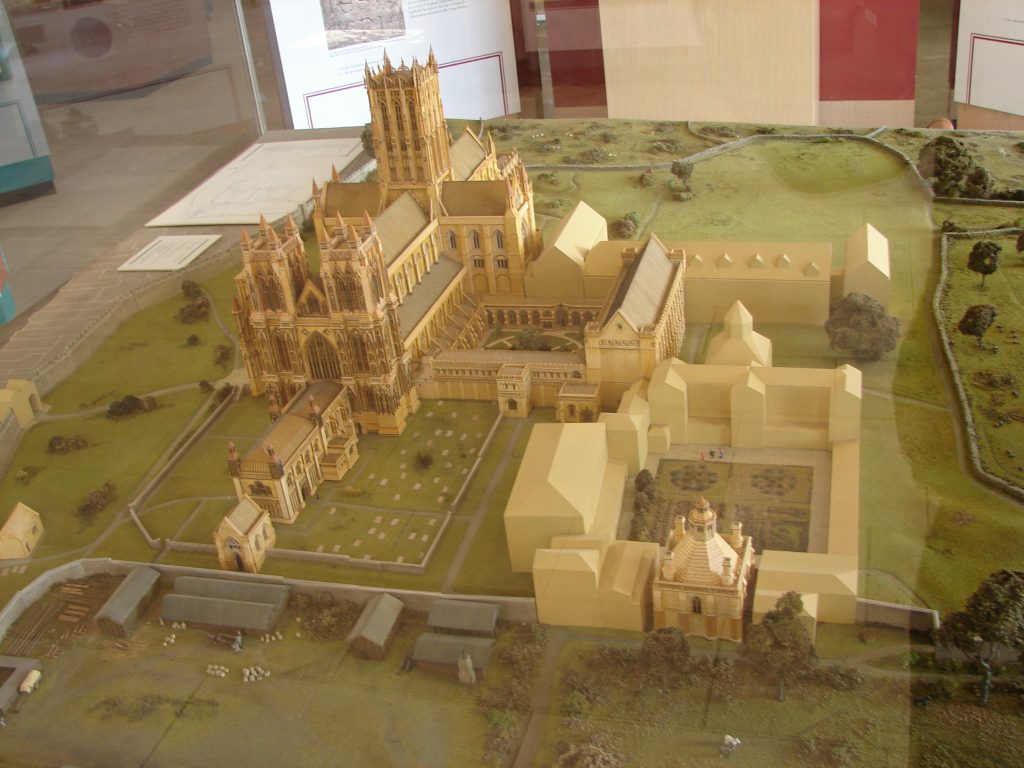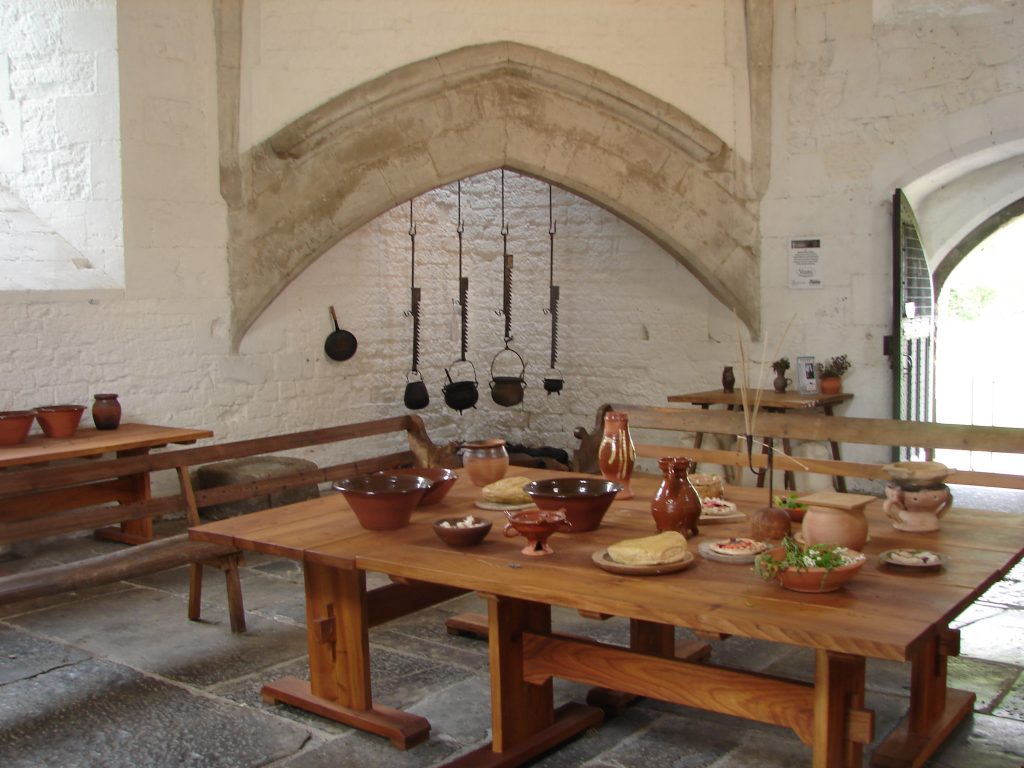 This posting will complete my discussion of the medieval Abbey of Saint Mary in Glastonbury, Somerset, setting of Joseph of Arimathea’s Treasure, fifth book in the Lady Apollonia West Country Mystery Series.
This posting will complete my discussion of the medieval Abbey of Saint Mary in Glastonbury, Somerset, setting of Joseph of Arimathea’s Treasure, fifth book in the Lady Apollonia West Country Mystery Series.
The abbey church had to be rebuilt after a great fire of AD 1184. This was funded at first by royalty and then by making the abbey a shrine for King Arthur and Queen Guinevere as discussed in my last posting. Progress on the new church, though incomplete, was sufficient by Christmas day of 1213 for the monks to take possession. Construction had started at the eastern end and progressed westward past the crossing and the transepts with at least a temporary roof. Vaulting was still to be added. Subsequently, by the middle of the thirteenth century, the new nave and western towers were in place.
Meanwhile, a few years had passed when Glastonbury replaced Wells as one of the seats of the bishop of the local diocese. The diocese was known then as Bath and Glastonbury, not the more familiar title of Bath and Wells, until about AD 1219.
Further construction of the church continued into the 14th century by adding the Galilee Porch connecting the west front to the Lady Chapel. Vaulting was also finished in all parts of the building, and the interior was brilliantly painted and gilded, unlike the bare stone which we now see in surviving medieval churches. A model of the abbey is shown above. The completed church, including chapels on each end, was 600 feet long and built using Doulting limestone from the nearby Mendip Hills. In the model, the cloister and dormitory of the abbey appear to the right of the church.
The abbey became a major economic force with its many manors and other possessions. Only Westminster Abbey could claim more wealth. The monastic buildings of the abbey included a sumptuous home for the abbot which appears on the lower right of the picture of the model. A century after Joseph of Arimathea’s Treasure, the abbot hosted King Henry VII in the abbot’s quarters.
The Abbot’s Kitchen, shown on the right, is the only significant monastic building on the abbey grounds to have survived to the present day. The kitchen for the rest of the monks could hardly have been more impressive than the Abbot’s Kitchen which includes four large fireplaces like the one shown in the picture that appears at the end of my post.
Besides all its property bringing income to the abbey, pilgrims’ regular visits also brought significant wealth. Pilgrims wished to visit the tombs of saints such as St. Dunstan, an early abbot, as well as those of King Arthur and Queen Guinevere mentioned in an earlier posting. It was also at the time of Joseph of Arimathea’s Treasure that the abbots encouraged various legends of Joseph to promote more pilgrimage.
The abbey continued to prosper throughout the 15th century, well beyond Lady Apollonia’s time. It was then that the Pilgrim’s Inn was constructed as mentioned in a recent blog posting, but all of this became meaningless when the Tudor King Henry VIII dissolved the monasteries of his kingdom. Glastonbury Abbey was the last to be dissolved, and its destruction was brutal. The abbot was killed, and his body displayed atop Glastonbury Tor. The buildings were destroyed and much of the stone on the abbey grounds was quarried, leaving the ruins we see today. It was a tragic ending for one of the greatest English monasteries.
Please join us next time when my topic will be Glastonbury Tor.

